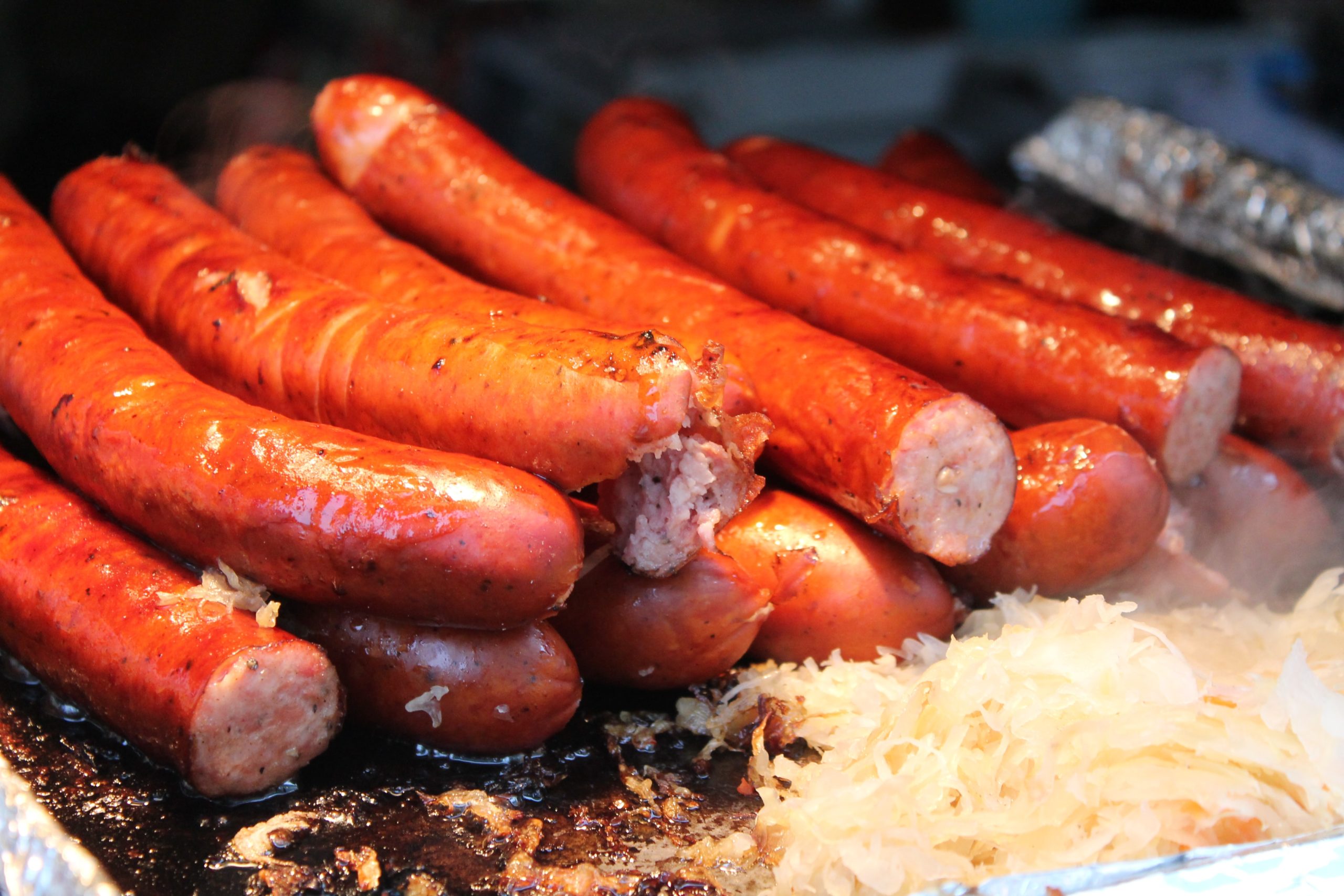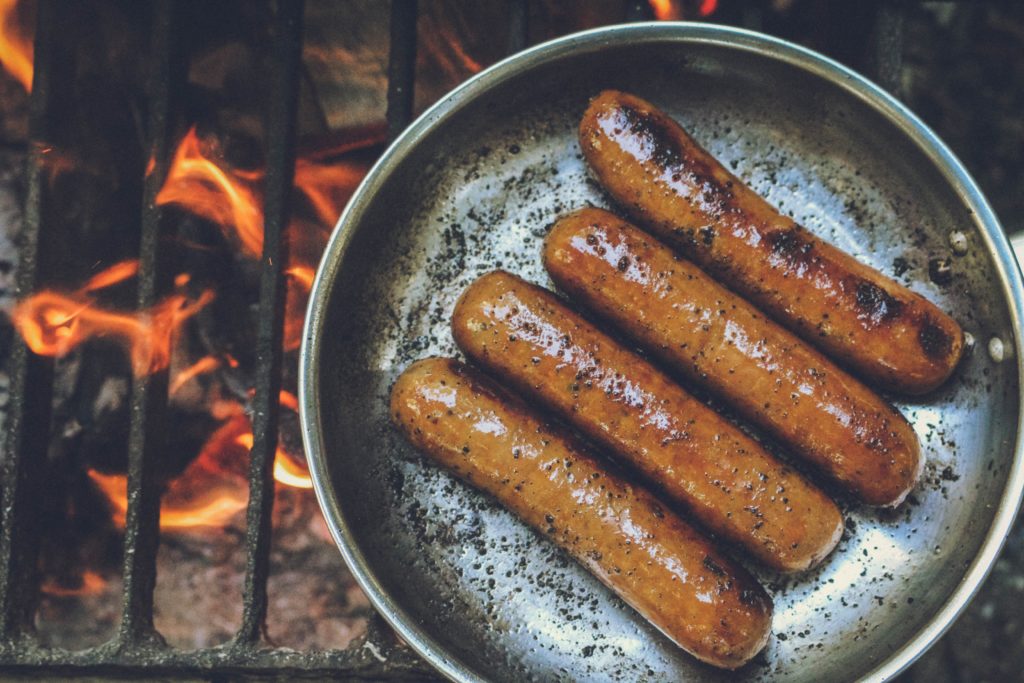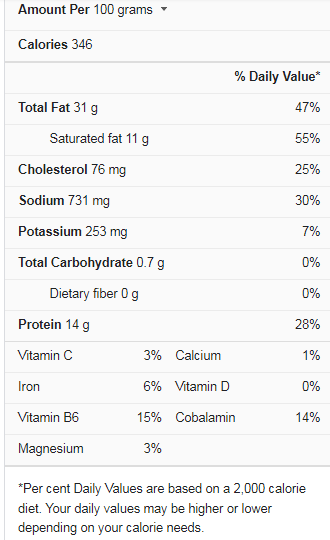Sausage is a meat product with skin usually manufactured from ground meat. Sausage is usually created in a casing composed of an intestine. However, synthetic casings are also used. Some sausages are cooked while being made, and the casing is removed. Making sausage is a time-honored method of food preservation, and sausages can be kept for a long time.
While sausages provide many of the same nutritional benefits as other animal-based items, such as protein and B vitamins, research has linked excessive consumption of red and processed meats to cancer as well as chronic conditions such as diabetes and heart disease. Processed meats, such as sausage, are generally discouraged by experts.
Even though the amount of protein in sausage varies depending on the variety, sausages are generally firm in this critical macronutrient. According to the Academy of Nutrition and Dietetics, your body requires protein to build and repair cells. Protein also aids in the battle against infection, the development and contraction of muscles, the maintenance of body fluid balance, blood clotting, and the transport of lipids, vitamins, minerals, and oxygen throughout the body.
Sausage Nutrition Facts
Sausages are high in Vitamin B-12 and Iron, both of which are necessary for the health of red blood cells and the generation of hemoglobin. Furthermore, B-12 aids in the metabolism of both fats and proteins! Around a third of your, RDA is provided by each sausage.
What Is A Sausage Made Of?
Although most sausage is prepared from pork, it may be created from almost any species. The inclusion of pork fat is the key secret to making great sausage. A) It’s tasty and adds flavor to the dish. B) Because the texture of the ground meat is transformed into a supple and moist product, sausage is produced with finely chopped and seasoned meat that can be fresh, smoked, or pickled before being placed into a casing. There are also fish and poultry sausages available.
What Is the Component Of The Animal Used To Make Sausage?
A sausage casing is traditionally constructed of the animal intestine. However, it can also be manufactured of plastic. Sausages come in various shapes and sizes, including hot dogs, pepperoni, bologna, and salami. Meat from the animal’s head, lips, cheeks, ears, and other components is frequently used in sausages, and some of them contain blood. The main ingredients in sausage making are skeletal muscle meats from slain animals. However, skeletal muscles differ in fat, water, and protein composition and water-binding and emulsifying characteristics, color, and other factors.
What Happens To Your Body When You Eat Sausage?
Sausages are high in Vitamin B-12 and Iron, both of which are necessary for the health of red blood cells and the generation of hemoglobin. Furthermore, B-12 aids in the metabolism of both fats and proteins! A third of your RDA is provided by each sausage People who consume a lot of processed meat, such as sausages, salami, or ham, are more likely to die from heart disease or cancer. The issue is that carcinogenic compounds such as nitrosamines are formed due to salting, pickling, or smoking, and they may be to blame for the rise in cancer mortality. According to several studies, processed meat has been linked to various cancers, heart disease, and diabetes.
Is It Okay If I Eat Sausages Every Day?
Summary: Anyone who consumes more than 40 grams of sausage or other processed meat per day is asking for trouble: For every 50 grams of processed beef consumed daily, the chance of death rises by 18%.Sausage is excellent and inexpensive, but it’s not something you should eat every day. It has an excessive quantity of salt and much too many additives to be considered part of a healthy and varied diet, as do most processed meats. According to experts, overeating bacon, sausages, hot dogs, canned meat, or lunch meat—anything that has been processed in some way to preserve or flavor it—is harmful to your health.
What Country Consumes The Most Sausage?
Germany (1.5 million tonnes) had the highest sausage consumption, accounting for almost 27%. Furthermore, sausage consumption in Germany was three times that of the second-largest consumer, Poland (574K tonnes). European sausages, such as those from Germany, France, and the United Kingdom, are among the most well-known in the world. These sausages are famous for a reason: they’re tasty, versatile, and simple to include in various recipes. You’ve most likely had your fill of British or German sausages. Without question, Germany has the most diverse selection and the most significant degree of skill in the world of sausage.
What Is Hot Sausage?
Hot sausages are traditionally cooked with pork and seasoned with garlic, red pepper flakes, and fennel or anise seeds. The sweet version has the same flavor profiles as the spicy version but without the red pepper flakes; Andouille is a spicy smoked sausage that originated in France but is best known in Cajun cuisine as a critical ingredient in jambalaya and gumbo. Fresh chorizo is a fresh pig sausage that has a texture and appearance similar to hot Italian sausage, and it’s the kind of stuff you’d find behind the butcher’s counter. Dry chorizo resembles sausage, although it’s more akin to cured sausages and salami.
In the case of haggis and other traditional puddings, sausage casings were traditionally composed of cleaned intestines or stomachs. Natural casings are now frequently substituted with collagen, cellulose, or even plastic casings, notably in industrially produced sausages. Some types of sausage are made without a casing, such as sliced sausage. In addition, luncheon meat and sausage meat are now accessible in tin cans and jars without casings. A sausage is a meat product produced with ground flesh, usually pork, beef, or chicken, and seasonings such as salt, spices, and other seasonings. Other components like grains or breadcrumbs might be used as fillers or extenders.
Meat is chopped or ground, mixed with additional ingredients, then packed into a casing to form sausage. Spices, apples, and leeks can be utilised as low-cost starch fillers. Beef, chicken, veal, and hog are the most popular meats. Style and producer determine lean-to-fat ratio. When the sausage’s flesh weight exceeds its total weight after drying, the meat content may be 100%.
Conclusion
Making sausage is a time-honored method of food preservation. Curing, drying (typically in conjunction with fermentation or culturing, which can aid in preservation), smoking, or freezing are all options for preserving sausages. Some cured or smoked sausages can be kept at room temperature. Until they are cooked, most fresh sausages must be refrigerated or frozen.
The production of sausage is a natural byproduct of effective butchery. To help preserve diverse tissues and organs, sausage makers traditionally salted leftovers, organ meats, blood, and fat. They then put them into tubular casings made from the animal’s cleansed intestines, giving them a distinctive cylindrical shape. As a result, sausages, puddings, and salami are the oldest prepared dishes, whether cooked and eaten right away or dried to various degrees.




